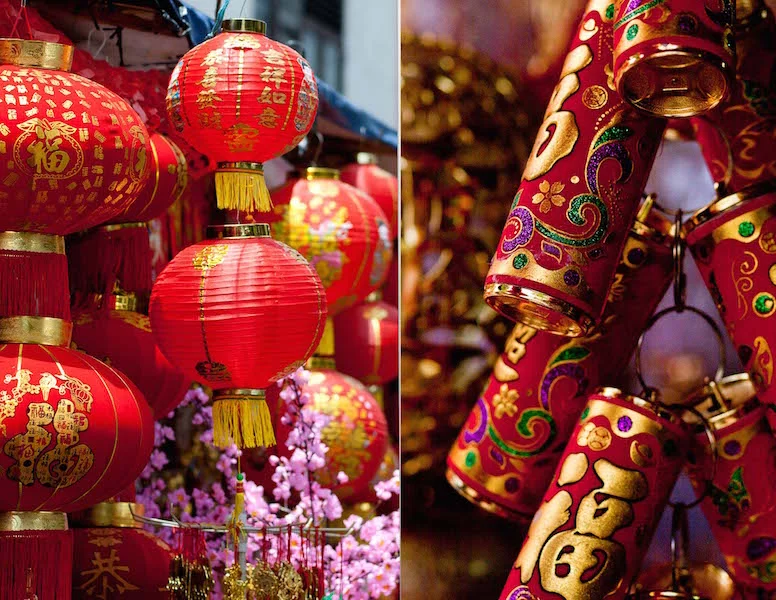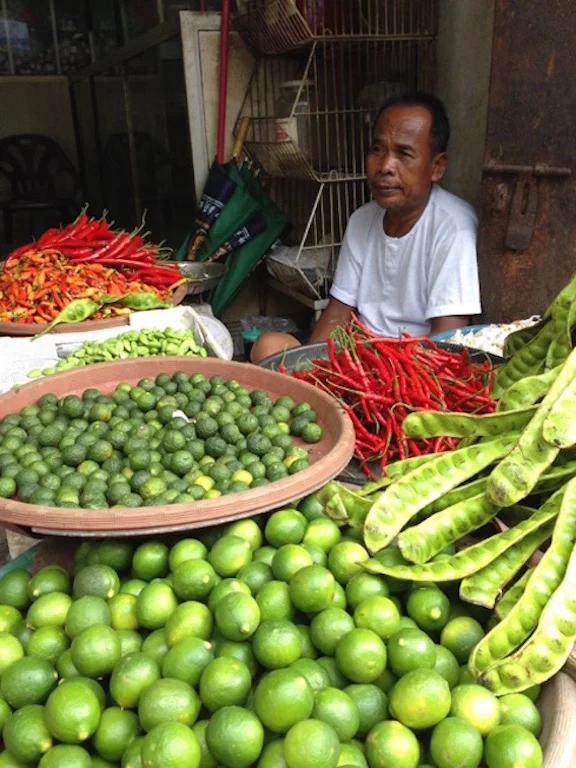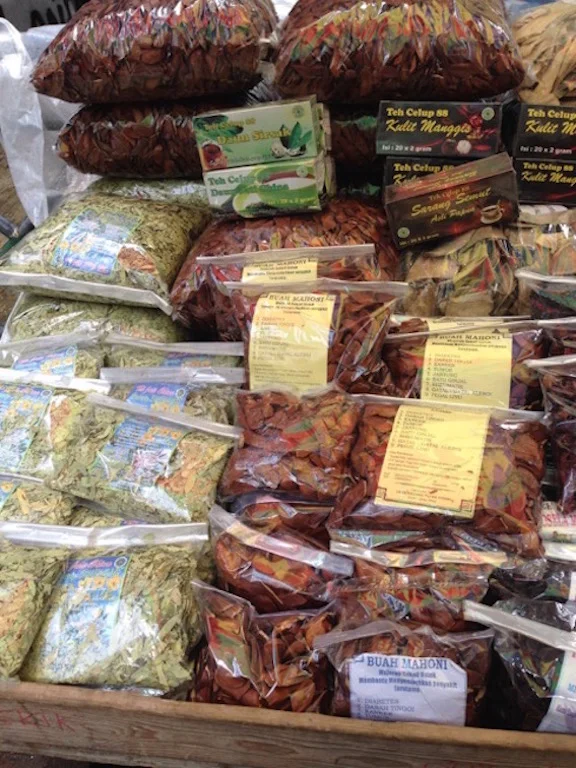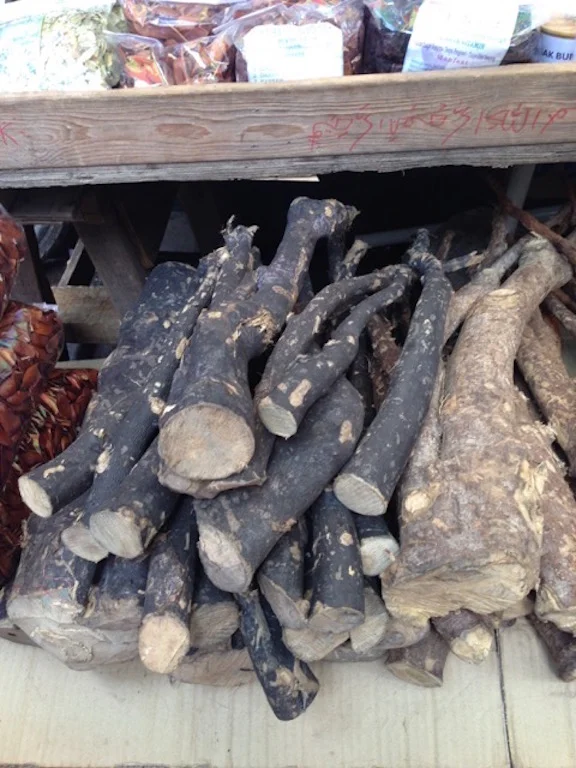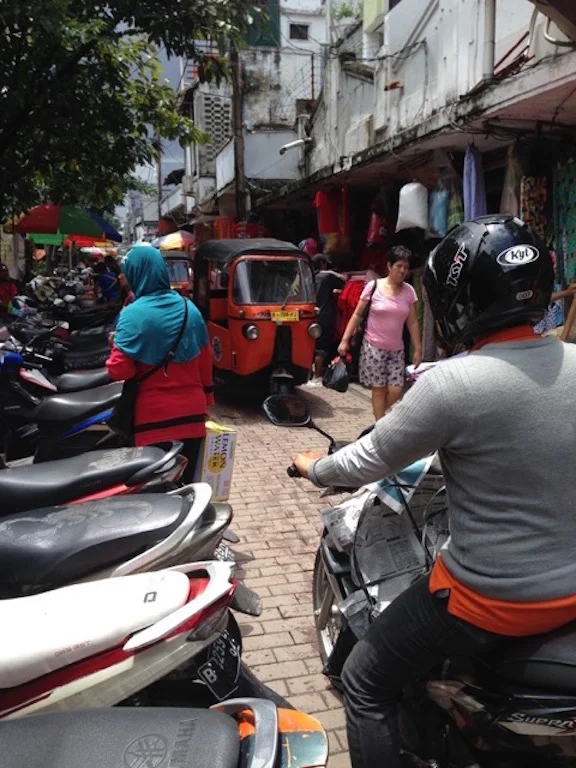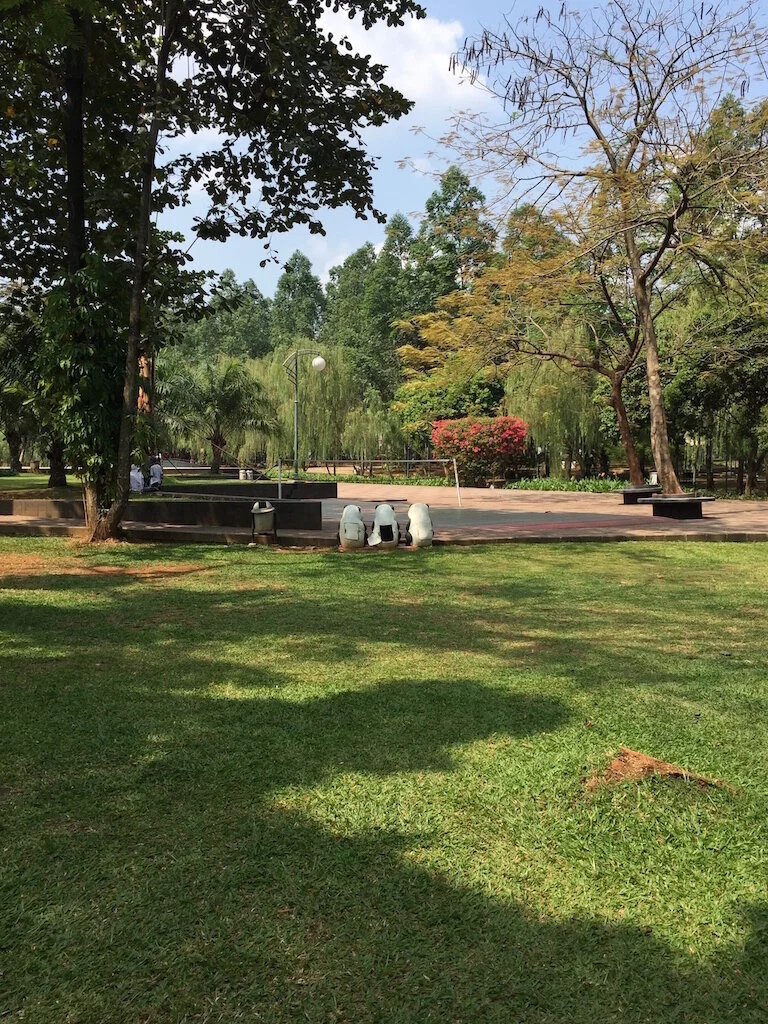Market Feature #3 : Chinese New Year in Jakarta (Ayo ke Pasar Pagi)
Every year more than one fifth of the worlds’ population celebrate Chinese New Year. Unlike New Year in the West, Chinese New Year is celebrated for up to 2 weeks.
Determining the exact date for Chinese New Year requires some calculations. In general, this auspicious date falls on the second new moon after the winter solstice. According to the Gregorian calendar, the winter solstice generally occurs around 21st December, which is why Chinese New Year tends to fall in late January or during the first 3 weeks of February. In 2016 the official Chinese New Year will be celebrated on Monday 8th February.
2016 is the Year of the Monkey. Those born in the Year of the Monkey are believed to be witty, intelligent and charismatic; but unfortunately for these individuals, 2016 is considered a bad year.
Chinese New Year in Indonesia
Chinese Indonesians constitute approximately ^1.2% of Indonesia’s population - and with a total population in excess of 250 million, this accounts for more than 1.9 million indiviudals. Therefore it is no surprise that Chinese New Year is a significant date on the Indonesian calendar. In 2002 Chinese New Year was declared a National holiday (‘Red Day’) for the entire Nation of Indonesia.
In Indonesia, Chinese New Year is called, ‘Imlek’. The Chinese well-wish, ‘Gong Xi Fat Chai’ (which translates as ‘May you have a prosperous year’), can be seen widely throughout Jakarta; perhaps no more so than in Jakarta’s Chinatown district of Glodok, located in West Jakarta.
Photos by Nita Strudwick Photography
Ayo ke Pasar Pagi!
Glodok, together with its neighbouring precinct of Mangga Dua, make up one of the biggest shopping areas in Southeast Asia. Stretching from Jl. Pancoran to Jl. Gunung Sahari, this trading precinct has approximately 500,000m2 of shopping space. Best known for bargain price tags for all things electronic, Glodok is also the biggest market for CD and DVDs in Jakarta.
However, it wasn't the vastness of these indoor electronic meccas that lured Liz and I to Glodok. Visiting in the lead up to Imlek, we were keen to immerse ourselves in the festivities and buildup to the most anticipated date on the Chinese Calendar. So ‘Ayo Ke Pasar Pagi*’ - off to Glodok’s authentic outdoor market we went.
Pasar Pagi is located in and around Petak Sembilan in Glodok, Jakarta (Photo by Nita Strudwick Photography)
During our visit, vendors had filled their stalls with an array of decorations for the Chinese New Year including money trees, waving cats, lanterns, paper decorations and musical firecrackers.. the list is long!
Photos by Nita Strudwick Photography
The toko-toko* which line the entrance to Pasar Pagi are full of clothing, traditional medicines and snack shops as well as party supplies.
A vast assortment of dried snacks and sweets are on offer at Pasar Pagi
As we entered Petak Sembilan and the marketplace itself, we encountered numerous vendors selling fresh produce. Commencing trade as early as 4am, you might think that the 'early bird gets the worm', however, we didn't feel too disadvantaged arriving mid-morning. An abundance of everything was available and better still, the temperature hadn’t climbed too high. A further advantage was that all the stalls and toko-toko * were ready to trade.
Quality fresh produce is available from the wee hours of the day (Photo by Nita Strudwick Photography)
Traditional ingredients can be hand selected and bought by the piece or by weight
Asian greens including Chinese cabbage, Chinese broccoli (gai lan) and bok choy. Fresh, crisp and healthy (Photo by Nita Strudwick Photography)
Continuing along Petak Sembilan, we met vendors selling honey and honeycomb from the Archipelago as well as dried flowers (ready to infuse as tea), pre-packed jamu ingredients and traditional medicines.
An assortment of natural tonics and jamu ingredients (Photo by Nita Strudwick Photography)
Further along, our heads swivelled with increasing energy; attempting to capture all of the sights. We were greeted by many a smiling face; people keen to explain their wares and equally eager for a sale.
Lots of fun to be had exploring the delightful Pasar Pagi. Expect to be greeted by smiling faces, young and old (Photo by Nita Strudwick Photography)
Some of the endearing sights of Pasar Pagi (anyone for a coconut?) (Photo by Nita Strudwick Photography)
Trepang (also known as sea cucumbers or beche-de-mer) from Belitung Island (Photo by Nita Strudwick Photography)
Some of the more unusual produce that we sighted included live snails, turtles, crabs and frogs (our little amphibian friends were tied together in an intimate embrace, ready to be freshly despatched with a swift lobotomy). An abundance of the highly-prized sea cucumber (trepang) were also for sale.
Note: Although we did not find the market to be at all confronting, it is good to be aware that live animals are being sold and despatched before your eyes upon sale.
Standing next to a local woman who was purchasing fresh frog meat, I inquired as to how she would prepare her order. She explained that she minces the meat and adds it to her babies’ food, as it gives her infant more strength.
Frogs legs - freshness guaranteed!
Chinese medicine is one of the most popular products in Glodok. As we continued on our journey we met a man selling various natural remedies. Curious as to why he was selling pieces of wood of differing lengths, he explained that they were to 'help your husband’..!
Traditional medicine for men
Returning to our car, we compared our purchases which included a handful of fresh jeruk nipis (local limes), a bagful of bright red chillies, some ‘white rabbit’ sweets (a childhood favourite of our photographer, Nita), a few packets of rosella flower tea, two pineapples and of course some super-cute paper decorations to adorn our home for Chinese New Year.
And in case you're wondering...we didn't buy any frogs legs!
Ripe pineapples (Photo by Nita Strudwick Photography)
Staple ingredients for Indonesian cuisine (Photo by Nita Strudwick Photography)
Verdict? It was unanimously agreed that Pasar Pagi is a must visit. This unique market allows you to wander freely outside (a bonus in Jakarta), interacting with the vendors and locals alike. Moreover, a visit in the lead up to Chinese New Year will provide you with a new perspective on life here in Jakarta.
More information about Glodok
Glodok is the largest Chinatown area in Indonesia. From the 17th Century onwards, many Chinese travelled to Jakarta as traders and labourers. Hence, Glodok (which exists on the boarders of Central, West and North Jakarta) has been home to many of the capital's Chinese community for more than 400 years. Glodok is considered one of the more significant commercial hubs for Jakarta’s Chinese-Indonesian community.
Advice when visiting Glodok
To assist you in being best prepared for your visit to the Glodok area, we surveyed a handful of our trusted friends who have visited the precinct on numerous occasions. Here is what they had to say:
Wear sturdy footwear and casual, comfortable clothes, especially if you are visiting the outdoor Pasar Pagi
The Glodok shopping precinct is paradise for those who are keen on electronics/IT and electrical appliances as well as spare parts for all things electronic
Many of the Glodok shops have online stores which allow you to be clear on the price tag and avoid bargaining, if that's not your forte!
Glodok is great for building materials such as bathroom gadgets etc.
Glodok is an interesting place as you can find unusual items such as old gramophones
Glodok region is good for window shopping as there are so many sights to take in
Be prepared for crowds!
Glodok is great for a taste of Chinese culture in Jakarta
Take some time to check out the Chinese pharmacist which stocks some amazing products made from various ingredients
Many locals source their wedding decorations from Pasar Pagi and the Glodok precinct
As with all markets, be prepared to bargain and find a price that is good for both yourself and the vendor
A walk around the Glodok neighbourhood is a must
When visiting the Glodok precinct, be sure to visit the numerous Buddhist temples (although a relatively recent fire gutted Jakarta’s historic Dharma Bhakti Temple) Read more at: Dharma Bhakti Temple fire
The Catholic Church, Santa Maria De Fatima is also worth a visit, in particular the Holy Maria display
Visit Glodok during Chinese New Year
Above all, have fun!
Interested in exploring more of Jakarta's pasars? Why not check out the following posts:
Photo by Nita Strudwick Photography
Pasar Pagi, Glodok
Jl Pancoran Glodok, Jakarta Barat
DKI Jakarta, Indonesia
^Summary of 2010 census conducted by the Central Statistics Agency (BPS)
*Ayo ke Pasar Pagi: let’s go to Morning Market
*Toko-toko: shops
*Terima kasih: thank you
This post was first published in January 2015.
Words: Jo Stevens Photography: Nita Strudwick and a journey bespoke






